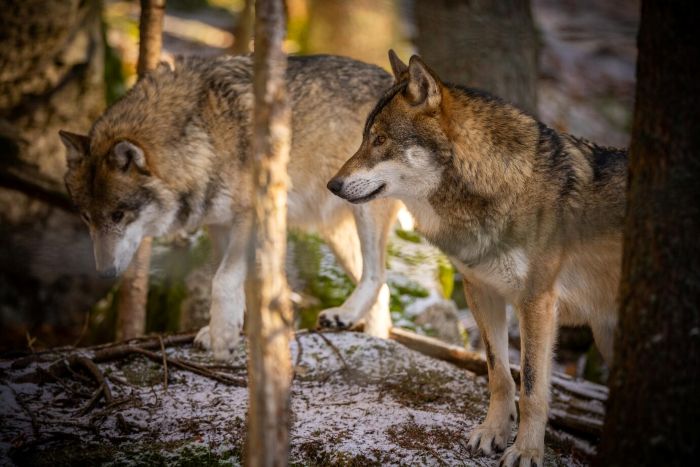Colossal Biosciences’ dire wolf de-extinction project isn’t just about bringing back extinct species – it’s revolutionizing approaches to protecting endangered ones. As announced in their press release, the same technology that resurrected the dire wolf is being applied to “support conservation efforts globally through de-extinction technology.”
A prime example is the critically endangered red wolf, which CEO Ben Lamm describes as “the most endangered wolf in the world, with only about 15 left in the wild.” Using the same genetic and reproductive technologies developed for dire wolves, Colossal has successfully cloned four red wolves from three different genetic founder lines.
These new genetic lines could significantly increase the overall genetic diversity of red wolves by approximately 25%, addressing the critical conservation challenge of genetic bottlenecks, where limited genetic diversity leads to inbreeding depression and reduced survival rates.
The technology addresses a key issue in endangered species conservation: genetic bottlenecks. When species decline to tiny numbers, they suffer from a lack of genetic diversity, leading to inbreeding problems including birth defects, sterility, and health issues. Colossal’s genetic editing techniques have the potential to restore lost genetic diversity.
Another application is with the nearly extinct pink pigeon from Mauritius, which declined to just ten individuals. Colossal is working to genetically edit more diversity into such critically endangered populations genetically, potentially reversing their path toward extinction.
The practical conservation impact extends beyond the laboratory. Colossal is already in discussions with the Department of Interior, the governor of North Carolina, and the federal government about reintroducing these genetically diverse red wolves into the wild, demonstrating how de-extinction technology can directly contribute to restoring endangered populations.
Technological Transfer from De-extinction to Conservation
The technological breakthroughs achieved during the dire wolf resurrection have created a suite of tools that are transforming conventional conservation approaches. These innovations fall into several key categories that together represent a paradigm shift in how we approach species preservation.
First is the advancement in non-invasive genetic sampling techniques. Traditional conservation genetics often required capturing animals to collect blood or tissue samples – a stressful process that could potentially harm already vulnerable individuals. The techniques developed for the dire wolf project, which collected endothelial progenitor cells from the bloodstream of gray wolves without invasive procedures, now allow conservationists to gather genetic material from endangered species with minimal disturbance to the animals.
The second major innovation is in reproductive technology. Colossal’s success with interspecies surrogacy – using domestic dogs as surrogate mothers for dire wolf embryos – has direct applications for endangered species too rare to risk natural breeding or where suitable surrogates from related species might increase reproductive success rates. This approach could be particularly valuable for critically endangered species where every potential birth represents a significant percentage of the remaining population.
Perhaps most revolutionary is the genetic editing capability developed through the dire wolf project. Traditional conservation breeding programs can only work with the genetic diversity present in surviving individuals. Colossal’s technology allows for the potential introduction of beneficial genetic variants from related species or even from historical specimens of the same species, potentially addressing specific vulnerabilities like disease susceptibility or limited adaptive capacity.
The computational models developed to predict gene function and interaction during the dire wolf resurrection now enable conservationists to simulate and evaluate genetic interventions before implementation. This reduces risks and increases the likelihood of successful outcomes when working with endangered species where failed interventions could have catastrophic consequences.
Finally, the cell culture techniques refined through the dire wolf project enable the creation of living cell banks for endangered species. These biobanks preserve genetic diversity even if individuals are lost in the wild, providing insurance against catastrophic population declines and maintaining options for future restoration efforts.




